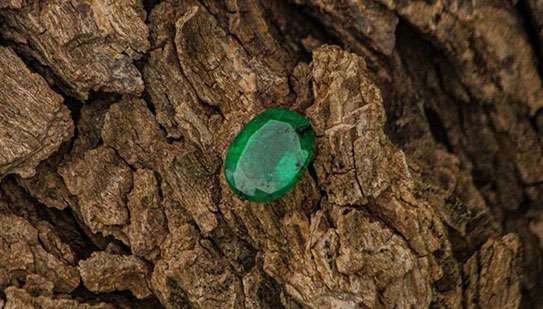Our manufacturing unit consists of 4th generation of emerald crafters. At Cardinaq, each emerald is preserved in its originality- unabated. Our emeralds are carved meticulously to bring out the best from their depth. These emeralds are an accurate personification of the unwavering spirit of your inner beauty. They’re an ode to perfection and we believe that just like our emeralds, each one of you is a reflection of excellence.

Origin
We majorly manufacture Zambian emeralds, but you can trust us for regular supplies of exquisite emeralds from Columbia, Panjshir Valley (Afghanistan), Russia, Ethiopia and Brazil.
Certification
We deal only in natural untreated emeralds. The only acceptable treatment for emeralds at Cardinaq is minor oil. On your request, we can provide you with certification from any lab that you trust. The time taken for lab testing by laboratories is beyond our control.

Emerald is one of the four precious gemstones, alongwith Diamond, Ruby and Sapphire.
Emerald is the green gemstone variety of a mineral Beryl. When pure, beryl is colourless. Trace amounts of chromium or vanadium in the mineral cause beryl to develop a green color. Emerald is defined by its distinguishable transparent and deep green color. To be an emerald, it must have a distinctively green color that falls in the range from bluish green to green to slightly yellowish green.
Emerald crystals grow one molecule at a time. Each molecule is positioned in the crystal matrix under optimum conditions. Sufficient time and space are required to allow a gem-quality crystal to grow. The natural emeralds that are being mined today are relics of geologic events that took place hundreds of millions of years ago, deep in the Earth’s crust.
Beryl is a rare mineral because beryllium occurs in very small amounts in the Earth’s crust. It is unusual for enough beryllium to be present in one location to form minerals. The conditions where beryllium is present in significant amounts vary from the conditions where chromium and vanadium are expected (which gives it the green color). The lack of simultaneous occurrence of these substances makes emerald a rare gem. This is why they are only found in a small number of locations.
Apart from the colour, the main factor determining an emerald’s quality and beauty is its cut. Rough emeralds emerge in many shapes and sizes. They are, then, extracted from the mineral. After various considerations, the stone is cut by a skilled craftsman.
Emeralds can be cut in a variety of shapes. There are some shapes that are predominantly common like round, emerald, oval, pear and cushion.
During the emerald growth process, it develops natural inclusions. These are typically referred to as “Jardin”, a French word for gardens. These inclusions indicate the genuity of the emerald and make it interesting. They validate that the emerald occurred naturally and wasn’t created in a laboratory.
Emerald is directly related to the planet Mercury. Emeralds possess healing properties along with protective qualities. They nurture complete stimulation and restoration of the mind, soul and body. It is used to symbolize renewal and growth. Wearing this stone allow the bearer to possess increased energy levels, better communication skills and to become more creative.
Emerald is a sensitive stone and must be cleaned with caution. It should not be exposed to harsh chemicals or ultrasonic cleaning. It is best to clean it with a mild soap and lukewarm water. It should only be cleaned when needed.

